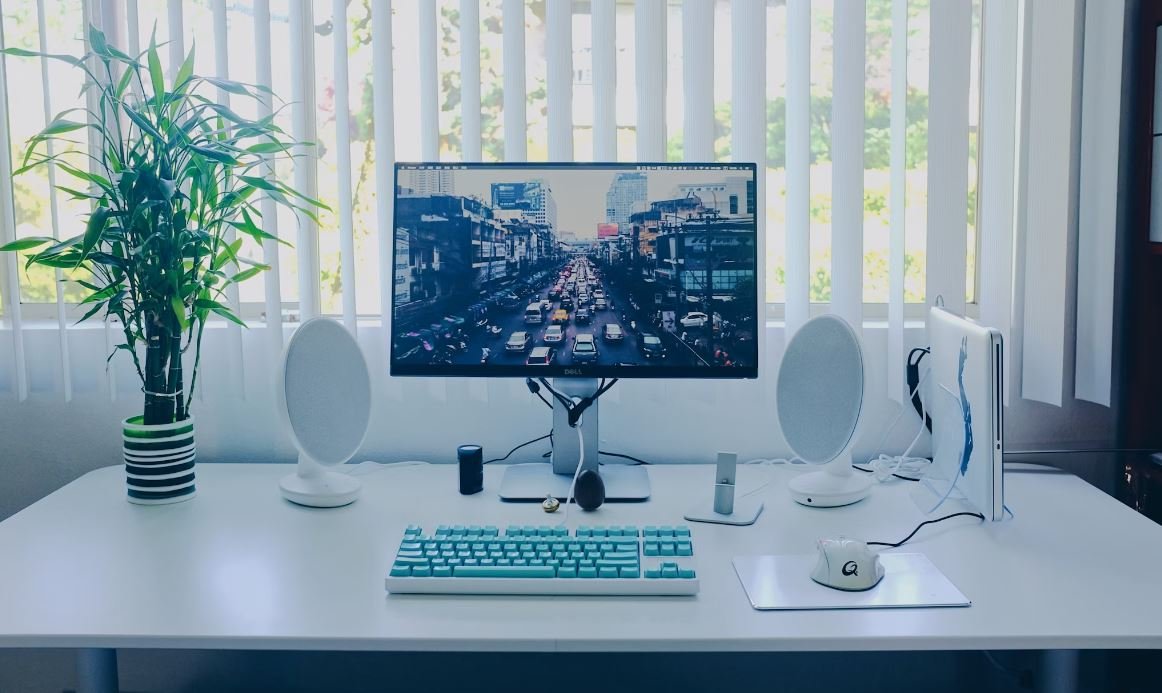Generative Music Patches
Generative music patches are a fascinating concept in the realm of music production, allowing musicians and composers to create continuously evolving music that is generated algorithmically. These patches use various algorithms and techniques to produce unique musical compositions, providing an avenue for creative exploration and experimentation.
Key Takeaways
- Generative music patches produce continuously evolving music through algorithmic generation.
- These patches offer a unique avenue for creative exploration and experimentation in music production.
- Various algorithms and techniques are used to create generative music patches.
Generative music patches utilize algorithms and techniques to create music that evolves and changes over time, providing a never-ending stream of musical ideas and possibilities.
Overview of Generative Music Patches
Generative music patches are software applications or modules that generate music in real-time using algorithms and rules specified by the user or programmer. These patches can be used in standalone software, virtual instruments, or as plugins within popular digital audio workstations (DAWs). By defining a set of parameters or rules, musicians and composers can create complex and evolving musical compositions.
The Advantages of Generative Music Patches
Generative music patches offer several advantages for musicians and composers:
- Endless Inspiration: By generating music algorithmically, generative music patches provide an endless source of inspiration and musical ideas.
- Unique Compositions: These patches produce compositions that are truly unique and can be tailored to fit specific musical contexts or moods.
- Exploration and Experimentation: Generative music patches allow musicians to explore new musical territories and experiment with unconventional chord progressions, melodies, and harmonies.
Generative music patches enable musicians and composers to break free from traditional compositional structures and explore unique sonic landscapes.
Common Algorithms and Techniques
There are several common algorithms and techniques used in generative music patches:
- Markov Chains: Markov chains are a probabilistic model used to generate sequences of events based on a set of transition probabilities. In generative music, they can be used to determine note sequences or rhythmic patterns.
- Cellular Automata: Cellular automata are mathematical models that consist of a grid of cells that evolve over time based on a set of rules. In generative music, they can be used to generate evolving melodies or rhythmic patterns.
- Genetic Algorithms: Genetic algorithms are inspired by the principles of natural selection and evolution. They involve generating a population of musical sequences and then “evolving” them through processes like mutation and crossover to create new, interesting compositions.
The Impact of Generative Music Patches
The use of generative music patches has had a significant impact on the music industry:
| Impact | Description |
|---|---|
| Increased Creativity | Generative music patches have expanded the creative possibilities for musicians and composers, allowing them to explore new sonic territories. |
| Experimental Music | Generative music has given rise to a wave of experimental music genres that push the boundaries of traditional composition and performance. |
The Future of Generative Music
The future of generative music is promising. With advancements in artificial intelligence and machine learning, we can expect even more sophisticated generative music patches that can adapt and respond to user input and external stimuli. These developments will further blur the line between composer and machine, opening up new avenues for musical expression.
Generative music is a dynamic field that continues to evolve, offering endless possibilities for musical exploration and creativity.

Common Misconceptions
Misconception 1: Generative music patches are all about random noise
- Generative music patches can indeed produce random sounds, but they are not limited to it.
- Generative music patches can also be programmed to create structured and harmonious compositions.
- While randomness can be an element, generative music can have controlled randomness to maintain musicality.
Misconception 2: Generative music patches lack creativity and human touch
- Generative music patches have the potential to create unique and original compositions.
- Artists and composers can input their creative ideas and rules into the generative system, thereby infusing their human touch into the music.
- Generative music patches can be used as a tool for inspiration, helping artists explore new sonic territories.
Misconception 3: Generative music patches are difficult to control and manipulate
- While generative music patches may have complex algorithms running in the background, they can be controlled and manipulated by users.
- Users can adjust parameters, rules, and inputs to shape the output of the generative system according to their preferences and creative vision.
- Generative music patches are designed with user-friendliness in mind, allowing even non-technical users to create and manipulate generative compositions.
Misconception 4: Generative music patches sound monotonous and repetitive
- Generative music patches have the ability to create ever-evolving and dynamic compositions.
- Generative systems can incorporate various elements such as changing tempos, rhythms, melodies, and harmonic progression to avoid monotony.
- The output can be influenced by external factors like user interactions or real-time data, ensuring a constantly changing musical experience.
Misconception 5: Generative music patches are limited to electronic genres
- While generative music is commonly used in electronic music production, it is not limited to electronic genres.
- Generative systems can be applied to any musical genre, including classical, jazz, rock, and even experimental genres.
- Artists from different backgrounds can use generative music techniques to explore new boundaries and push the boundaries of their respective genres.

Generative Music Patch
Generative music is a form of music that is created using algorithms or rules rather than traditional composition methods. This unique approach allows for the creation of constantly evolving and dynamic music pieces. In this article, we will explore ten different generative music patches, each presenting diverse aspects and elements of this fascinating genre.
1. Ambient Flow
With a focus on creating a calm and serene atmosphere, this patch utilizes soothing synth pads and gentle arpeggiated melodies. The music gradually evolves and unfolds, providing a sense of tranquility and relaxation.
2. Rhythmic Pulse
This patch showcases an ever-changing rhythmic pattern, combining intricate drums and energetic percussion. The music pulses and drives forward, capturing the listener’s attention with its dynamic and compelling beats.
3. Tonal Swirl
Featuring evolving tonal clusters and harmonies, this patch creates a rich tapestry of sound. The music continues to shift and transform, taking the listener on a journey through various melodic landscapes.
4. Textured Reverberance
Using an array of reverberant soundscapes and atmospheric effects, this patch immerses the listener in a dense and captivating sonic environment. The music resonates and echoes, creating a layered and textured listening experience.
5. Randomized Chimes
This patch generates unpredictable sequences of chimes and bells, creating a whimsical and playful musical atmosphere. The music meanders and surprises, with each note bringing a delightful element of unpredictability.
6. Melodic Interplay
By intertwining multiple melodic lines that play off each other, this patch generates complex and harmonically intricate compositions. The music weaves and dances, inviting the listener to explore its nuanced interplay.
7. Minimalist Repetition
This patch focuses on minimalistic repetitions and gradual variations. The music evolves by subtle increments, exploring the beauty of simplicity and repetition in generative music.
8. Spatial Ambience
Using techniques such as panning and spatialization, this patch creates an immersive and three-dimensional sound field. The music envelops the listener, creating a sense of space and depth within the sonic environment.
9. Algorithmic Jazz
This patch combines the improvisational nature of jazz with algorithmic patterning to create intricate and ever-changing jazz compositions. The music swings and grooves, incorporating elements of unpredictability within the structured jazz framework.
10. Pulsating Modulation
Through the use of pulsating and modulating synths, this patch generates a sense of constant movement and evolution. The music pulses and morphs, capturing the listener’s attention with its dynamic and evolving sonorities.
Generative music patches offer a compelling and unique approach to creating music. By leveraging algorithms and rules, these patches provide a rich variety of musical experiences, ranging from calming ambiences to complex jazz compositions. The ever-evolving nature of generative music keeps the listener engaged and curious, providing a fresh and exciting sonic journey with each new piece.
Frequently Asked Questions
Generative Music Patches
Q: What is generative music?
A: What is generative music?
Q: How does generative music work?
A: How does generative music work?
Q: What are generative music patches?
A: What are generative music patches?
Q: Which software or hardware platforms support generative music patches?
A: Which software or hardware platforms support generative music patches?
Q: Can I customize generative music patches?
A: Can I customize generative music patches?
Q: Are generative music patches copyright protected?
A: Are generative music patches copyright protected?
Q: Are there any legal restrictions on using generative music patches?
A: Are there any legal restrictions on using generative music patches?
Q: Can generative music patches be integrated with other music production tools?
A: Can generative music patches be integrated with other music production tools?
Q: Are generative music patches suitable for live performances?
A: Are generative music patches suitable for live performances?
Q: Can beginners use generative music patches?
A: Can beginners use generative music patches?




